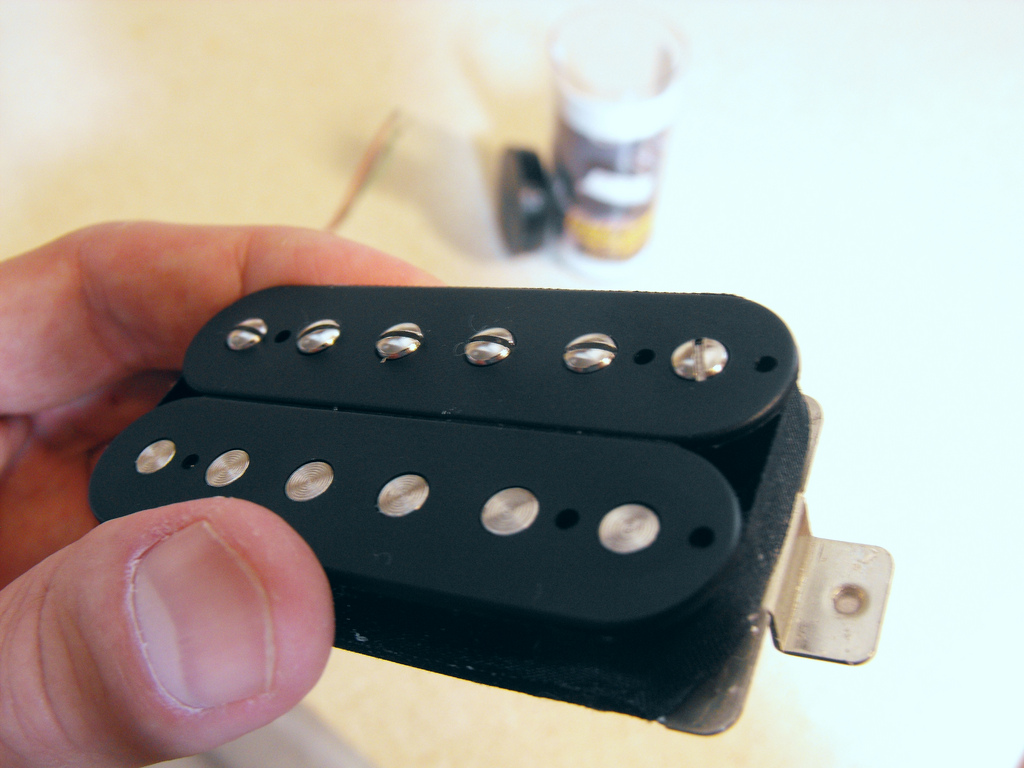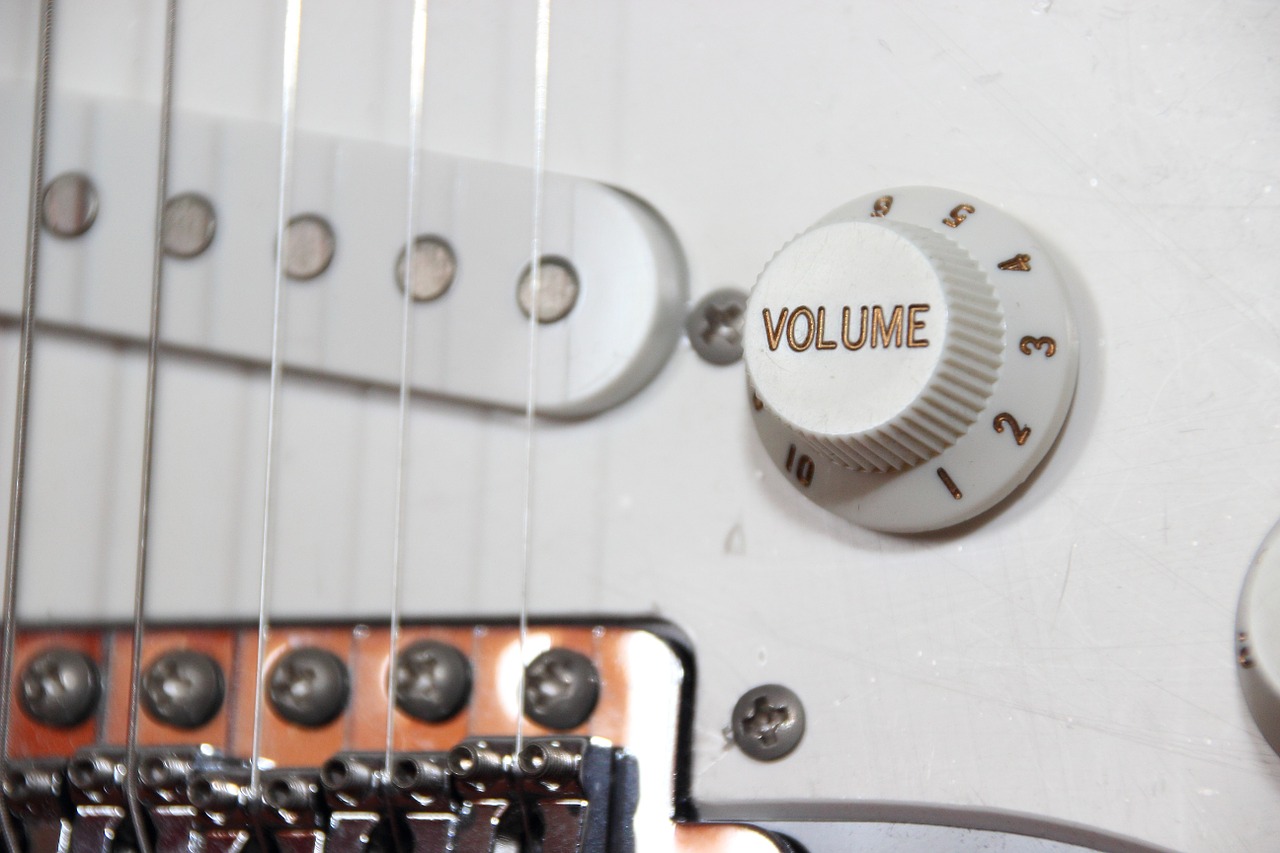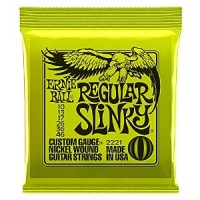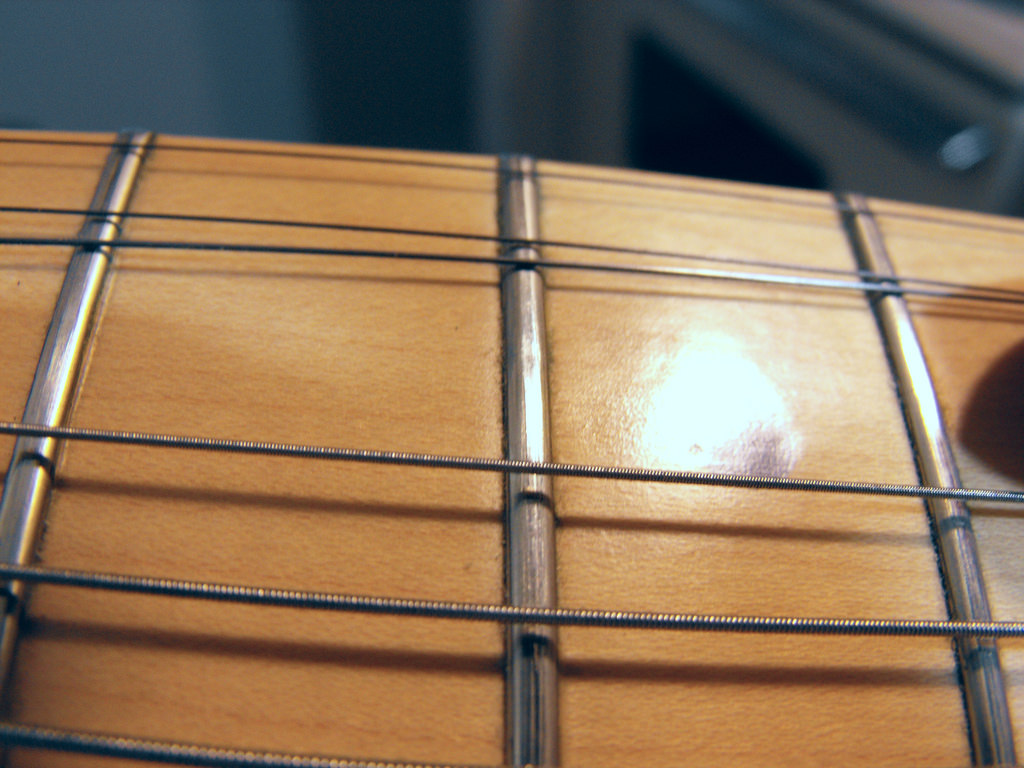This is part 2 of a 4 part instructional series on how to get the best possible live tone.
Part 1 – Introduction & General Information
Part 2 – Your Guitar
Part 3 – Amplification and Effects
Part 4 – Live Sound at the Gig
Cheap vs. Expensive Guitars
If you’re a novice guitarist who’s just starting out, you don’t need to spend thousands of dollars on a top quality guitar. An inexpensive instrument will do just fine. Some guitarists, especially those that tour regularly, prefer to use inexpensive guitars when playing live. This means that when their guitar has received a sufficient amount of wear they can simply replace it with a new one.
Achieving good tone at a gig has more to do with what kind of amplification you’re using (part 3 of this series) and less to do with the type of guitar you’re playing. While the difference in using a high quality guitar will definitely be audible, you can still get away with a relatively cheap instrument and a good amp.
A good quality guitar is priced at around $250 or more. Guitars priced at $150 or less, although suitable for beginners, are prone to losing tune very quickly and also have other annoying issues such as noisy pickups and uncomfortably high playing action. They also don’t sound particularly great.
When it comes to choosing the right guitar for playing live, you should rather focus on one that meets your expectations instead of price. Personally I like my guitars not to weigh too much. They should hold their tuning very well and the playing action should be as low as possible (more on this later). I also like to have a tremolo system.
If you’re an advanced guitar player, you may want to make use of something a little more on the expensive side such as a genuine Gibson Les Paul or Fender Stratocaster in order to obtain optimal tone and playability. I think it’s fair to make the generalization that in terms of tone, these 2 guitars are the flagship models.
There are also some great boutique guitars on the market today such as PRS and Ernie Ball Music Man. There’s some visually stunning guitars that can add something extra to your live performances; such as the Ball Family Reserve range from Music Man as well as some interesting guitars from Ibanez. Usually, however, these guitars are quite expensive.
Pickups
Pickups have a lot to do with the kind of output your guitar is sending to your amp. Most guitars include more than 1 pickup allowing you to achieve a selection of different sounds.
Gibson refers to each pickup as “bass” and “treble” on their selector switches. This is also an accurate way of describing the difference in sounds from one pickup to another. The pickup on the bridge end of the guitar has a brighter sound, while the neck pickup has a more bassy and fatter sound.
Hard rock and metal guitarists are more than likely to use their bridge pickup for a bright sound that cuts through the mix, while blues is commonly associated with the neck pickup.
You get two types of pickups, namely:
Single coil – These are associated with cleaner sounds, although many well-known artists such as Kirk Hammet and Tony Iommi have used single coils in metal music.
Humbucker – These were designed with the intention of cancelling out the hum associated with single coils, hence the name “hum buckers”. They produce a louder output signal making them perfect for rock music and hi-gain sounds.
Some guitars contain a combination of single coil and humbucking pickups. If you’re using a distortion sound on your amp, changing between these 2 pickups will vary the amount of gain.

A humbucker pickup – Photo by Tim Patterson
You want to incorporate the use of different pickups as much as possible into your playing. This will allow you to accurately zone in on the tone you’re after that’s suitable for different types and genres of music.
Guitarists such as Yngwie Malmsteen constantly change between their pickups during solos. For example, Malmsteen changes to his neck pickup for sweep picking and faster licks. The neck pickup is more forgiving in terms of the separation between notes, making it easier to play with speed.
Finally, I would like to touch on the fact that noise cancellation needs to mainly come from the pickup itself. This means that you want to avoid using noise suppression pedals and gear as much as possible. Generally, however, noisy pickups are associated with cheap guitars. Noise usually originates from improperly wired pickups and poor grounding. If you’re having problems with a noisy guitar, take it to a guitar technician in order to get the correct grounding and shielding applied.
Volume
The volume control knob is an important asset to any guitarist. I like to think of this control as being just as important in determining my tone as the guitar pickups. In order to get the best response from your volume knob, you should plug into a high quality tube amplifier (we cover this in part 3 of this series).

A fundamental aspect for crafting your tone is the use of your guitars volume control.
If you’ve ever tried to zone in on a particular sound but just couldn’t quite get it right, then it could be due to the volume knob being set in the wrong place. Using your volume control should be incorporated into your playing technique in order to vary the amount of output you’re sending to your amp. This can be great for cleaning up a high gain sound in order to match the particular piece of music you’re playing.
Some guitar players prefer to use a volume control pedal instead of the volume pot on their guitar. Personally I prefer to use this control directly on my guitar. I’ve become so used to changing the volume on my instrument itself that I find myself adjusting it automatically.
As an example, you can use your volume control to back off the amount of gain to achieve a sound suitable for rhythm parts. For solo parts you can turn it up for extra distortion and sustain. Another example is turning your volume right down for parts that require less fullness and compression.
Treble Bleed Mod
You may have noticed that when you turn the volume control down on your guitar you tend to lose some of the treble in your tone and as a result end up with a darker sound. This is more noticeable on single coil pickups in comparison to humbuckers.
Some people prefer to have a consistent amount of treble when they turn down their guitars volume. In order to achieve this you will need to wire a 150k resistor with a 0.001uf or 100k/0.002uf cap to your volume pot. You can find a wiring diagram here and here. You can also buy the complete mod.
A major advantage of using the treble bleed mod is that it allows you to achieve a clean sound by simply turning your volume right down when on a high gain setting. This means that you don’t need to change to a separate channel for a clean sound.
Certain guitars such as the Ibanez Jem already have the treble bleed mod installed. It really comes down to personal taste and the type of sound you’re after. Personally I don’t mind guitars that don’t have the treble bleed mod installed (I actually prefer a slightly darker sound when I decrease my guitars volume).
Setup
A great setup is important for achieving the best possible tones and playability from your instrument. If you feel that your guitar is playing uncomfortably, you can take it to a guitar technician to have it setup. Guitars are prone to being effected by weather conditions. Sometimes it may be necessary to readjust the truss rod, which tends to warp due to weather changes.
An important aspect of being able to play your instrument in the most comfortable way possible is the action. This refers to the distance of the strings from the fretboard. A low playing action (my preference) is great for speed while a high action generally produces longer sustaining notes. If you want to improve the playability of your guitar, you can try lowering the action. A guitar technician can adjust the action settings on your guitar to suit your requirements and playing style.
Strings
Many professional guitar players replace their strings after every live gig when they’re touring. New strings allow you to achieve maximum tone and playability.
Personally I like to replace my strings at least once a month. If I’m gigging regularly I may replace them more often. If I’m just practicing at home and not playing out, I only replace them when they can no longer hold their tune.
You will need to choose a string gauge based on your personal playing preference. Note that there is a consensus amongst guitar players that a thicker gauge will improve your tone. This is absolutely not the case! Billy Gibbons from ZZ Top uses a .007 gauge and he’s known for his killer tone.
In terms of string brand, this is really personal preference. Some string manufacturers like Elixir include a protective coating, claiming that their strings last 3 to 5 times longer. My personal choice is Ernie Ball. They sound great and they’ve always been consistent.
An extremely important aspect to maintain the qualities of a fresh pair of strings for as long as possible is to ensure that your fretboard is completely clean. I like to clean and condition my fretboard before every string change. I use a chemically treated cloth called Gorgomyte that I simply rub down my neck to get it perfectly clean. Other ways of doing this include using steel wool and lemon oil for conditioning purposes. For me, personally, this is a bit of a hassle in comparison to Gorgomyte. I like to spend minimal time cleaning my fretboard, as this can be a tedious task.
Tuning
The biggest tone killer is a guitar that’s not tuned properly. Making sure that your guitar is perfectly in tune should become a habit before every performance.
The first step to tuning as accurately as possible is to invest in a high quality tuner. I use the Boss TU-2. I’ve used it on the road for years and it’s never failed. You can find one at any music store.
Secondly, make sure that you always tune up to the correct pitch and not down. Your guitar will stay in tune a lot better if you tighten the string instead of loosening it. When tuning, always tune down first and then tune up to the correct pitch.
If you use a tremolo system, you may want to use a very small amount of Big Bends Nut Sauce in the groove of the nut where the string is placed. Joe Satriani and other great players use this product to help their guitars stay in tune.
Scale Length
One of the most fundamental and also rarely considered factors for determining a guitars tone and playability is the scale length. This refers to the string length from the bridge saddle to the nut.
If you’re wondering why certain guitars feel completely different in comparison to one another, then it’s a result of different scale lengths. Gibson guitars have a slightly shorter scale length in comparison to Fender Stratocasters.
As a result of having a shorter scale length, you will find that the frets are spaced more closely together. This results in more closely packed harmonics.
If you’re having a tough time bending your strings, you may want to try a guitar with a shorter scale length.
Fret Leveling
Another factor in determining how well your guitar plays and sounds is whether or not the top of all the frets on your fretboard are relative to each other. Level frets allow you to achieve the lowest possible action while eliminating any fret buzz. You will also notice improvements in your tone such as added clarity.
Over time, especially if you gig on a regular basis, frets can become worn due to the string rubbing against the metal fret. Strings are made of a harder metal, so as a result it files down the steel fret.
It’s possible to file each fret down in order to achieve consistent fret height. This process is also known as dressing the frets. In order to have your frets leveled, you will need to take your guitar to a professional guitar technician. It will make them look shinier too.
Pick Type
One of the most affordable pieces of guitar gear that can have a big impact on your tone is the type of pick you’re using. You can try experimenting with different types of picks in order to achieve different sounds. Generally, the harder the pick material the brighter your tone will be.
Personally I choose my pick based on comfort. I like a thicker pick (0.88mm or more). Thicker plectrums (medium guage / heavy / extra heavy) are great for electric guitars and also work well for articulation and speed.
Stay tuned for part 3…



